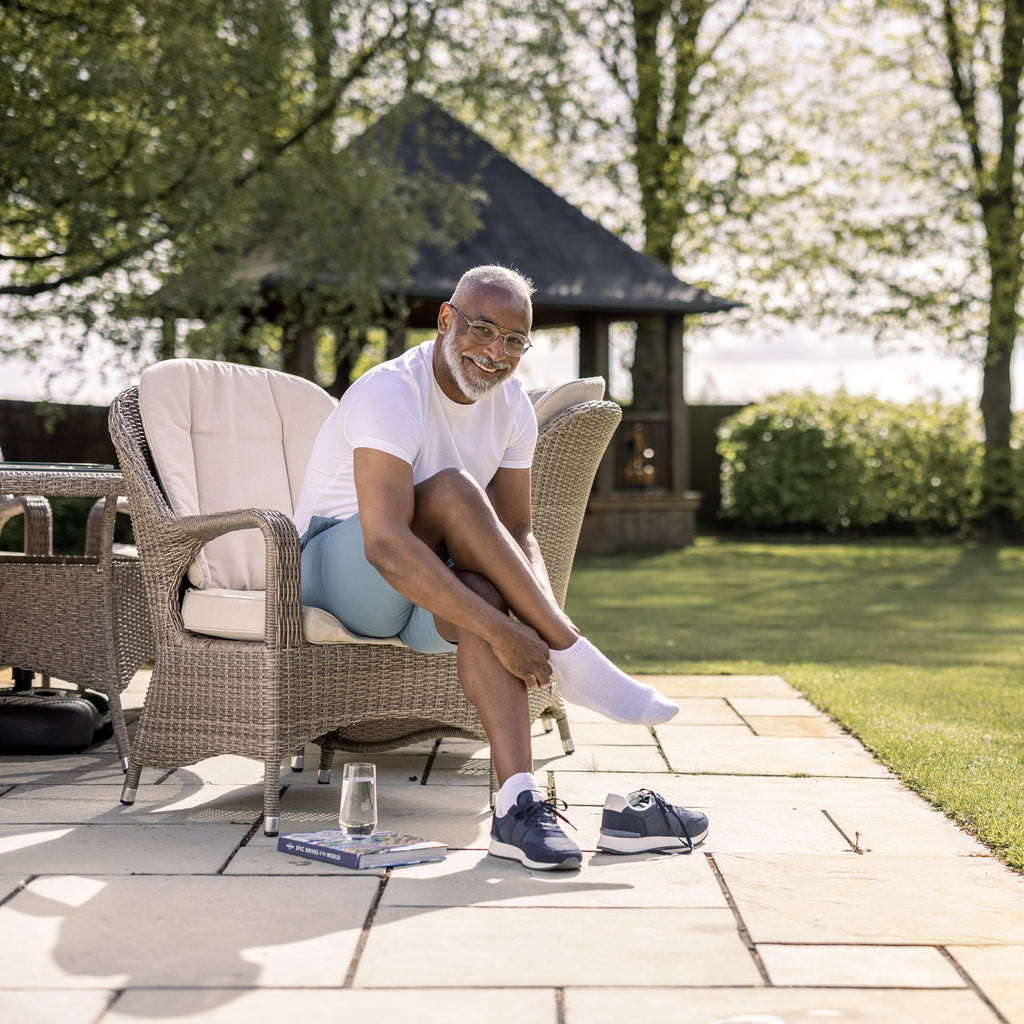If you’ve been cheering on the England men’s football team in the Euros, you may have noticed something strange about their kit. During the win against Serbia, eagle-eyed fans spotted that Real Madrid striker and England star Jude Bellingham had gaping holes in the backs of his socks. They didn’t look accidental – and besides, England players can surely lay hands on a spare pair of socks. So why had the player deliberately cut these holes in the fabric?
As it turns out, football socks can often run small and tight, which leads to constriction around players’ calf muscles. This pressure can cause problems with circulation and even long-term health issues. On top of that, the tight fit can restrict movement, which is the last thing you want when you’re hurtling upfield to get on the end of an inch-perfect Bukayo Saka cross. So Bellingham had cut the holes to ease the pressure on his legs – no doubt infuriating the parents of young footballers up and down the country who’ve made their socks just like Jude’s.
It’s no surprise that even footballers struggle with finding socks that are genuinely fit for purpose. The truth is that far too many companies crank out ill-fitting socks that are designed purely for looks or low price – at the expense of durability, comfort or health.
Manufacturers try to save cost by choosing cheaper yarns that don’t have enough stretch or simply skimping on fabric, so the finished sock is thinner and smaller overall. That’s why we see ‘sports’ socks that are really just basic cotton socks, ‘thermal’ socks that aren’t up to September weather and ‘tough’ workplace socks that can barely make it through a shift. Ill-fitting socks are particularly bad for those with health problems that affect the feet, who need a tip-top fit with no constriction or rubbing that can lead to sores.
Fortunately, someone out there understands that not everyone has stick-thin legs and feet. Gentle Grip men's socks and women's socks have been specially designed for those who find that regular socks are too tight and leave nasty red constriction rings around their calves. Originally introduced in 1998, Gentle Grip has become a firm favourite for millions of grateful sock wearers around the world, and the range now includes many different colours and styles – men’s, ladies’, kids’, plus size, woollen and even super-comfy socks made from bamboo (if you don’t believe it, just try some).
For those with special medical needs, there’s also the IOMI FootNurse range. This includes socks to help manage the symptoms of oedema, as well as other size-related conditions such as lymphoedema and fluid retention that lead to swelling in the feet and ankles. Special diabetic styles feature hand-linked seams to keep rubbing to a minimum. There are energising socks which help support and promote healthy circulation, re-energising tired and aching legs, plus flight socks to reduce the risk of deep vein thrombosis (DVT) when you’re taking a flight or sitting for long periods on a car, bus or train.
The range also includes socks to help relieve Plantar Fasciitis and cushioned-sole diabetic socks for those looking for even more comfort and protection.. Moving away from feet, IOMI FootNurse joint warmers help to keep the cold out and the heat in, helping those who suffer from knee or elbow pain in the colder months.
If Jude Bellingham’s holes help the England team to victory, we are sure England fans are not going to argue. But either way, there’s really no need for us to suffer with tight, ill-fitting socks. So if comfort is your goal, make a run to gentlegrip.co.uk and score a pair today.
 Log In
Log In




